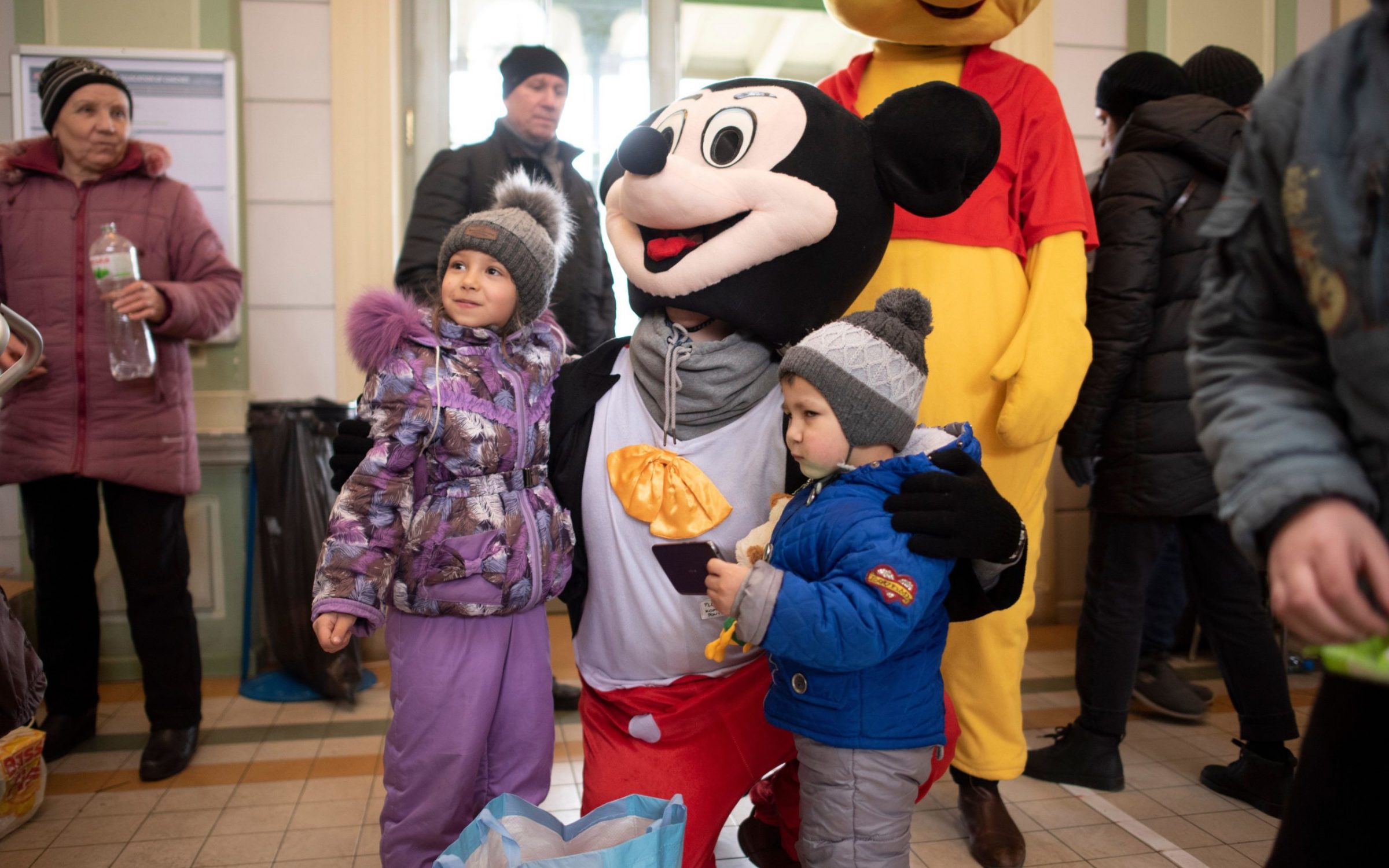Walking around the cobbled streets of Rzeszow, it was hard to tell anything had changed. Little blue and yellow flags stuck in people’s windows were the only clue that the city in southeast Poland was at the frontline of the biggest migrant wave in Europe for 80 years.
“We will do everything to provide safe shelter in Poland for everyone who needs it,” Poland’s interior minister, Mariusz Kaminski, said at the start of the crisis. It was a spectacularly ambitious promise. But the Polish people have kept his word, mobilising en masse to absorb the two million Ukrainians who have been forced to flee their homes and cross the 310-mile border with Poland.
Hundreds of tons of donated supplies and the generosity of an army of volunteers, handing out food, drinks, clothes and money, have prevented a humanitarian disaster. Shops and restaurants are giving discounts to Ukrainians. Poles across the country have opened up their homes to perfect strangers and offered lifts across Europe. There’s been a deep warmth to the welcome. Refugees have been met with banners at Polish stations: “You’re safe here,” read one.
Close cultural ties have helped enormously. There were already around a million Ukrainians in Poland before the war began, making up 57% of foreigners in the country. Many Ukrainians – the lucky ones – are going to stay with family and friends.
The influx of Syrian refugees to Europe in 2015 has made migration a divisive issue in Poland. But the reality of war galvanised support. In mid-February, 56% of Poles were in favour of accepting Ukrainians. Now 90% say they support the admission of refugees, with 65% saying they are willing to help personally.
This overwhelming acceptance was far from inevitable given the two countries’ turbulent history. The territory that comprises present-day Ukraine and Poland played host to untold bloodshed in the 20th century, carved up by the Nazis, then the Soviets, stirring up ethnic tensions which brought its own horrors.
I asked my Polish AirBnB host, Maria, if she was surprised by the lengths her country was going to to help Ukrainians. “It is like looking in a mirror,” she said with a smile. “But it’s complicated”. Then she wrote down a word on the bit of paper the Wi-Fi password was printed on and told me to look it up: Wołyń. “For the whole story,” she said.
It was a reference to the ethnic cleansing of Poles in Volhynia and Eastern Galicia in 1943. In an attempt to prevent the post-war Polish state claiming sovereignty over Ukrainian-majority territory, a section of Ukraine’s nationalist underground systematically and barbarically murdered 50,000 to 100,000 people, mostly women and children.
Before the end of the war, Poles would kill between 15,000 and 20,000 Ukrainians in retaliation. In 1947, the Polish government launched Operation Vistula, the mass deportation of Ukrainians from the area around Rzeszow, where Maria was born.
On the platform at Przemyśl train station, the arrival point for some 400,000 Ukrainians, I met Tomasz. He worked for T-Mobile and had come to volunteer on his day off. He was handing out sim cards to Ukrainians and helping them connect to the Polish network. I asked why his country was helping Ukrainians. He shrugged. “They are like us,” he said. “Scared.”
This was a common theme in the Poles I spoke to. The instinct to come to the aid of those in need was coloured with apprehension about what the war would mean for Poland itself.
Krystyna, a Polish mother of two, eating lunch with her husband at a cavernous, dimly lit Przemyśl restaurant popular with locals, had taken in a Ukrainian family – a mother, Anastasia, 31, her son, Stanislav, 7, and daughter, Miri, 5. “The Polish, we know about invasion,” she said. “This is why we help. We don’t know what he will do next.”
Ukrainians are escaping the violence of a war motivated by one man’s warped perception of historical injustice. But unlike Vladimir Putin, Poles aren’t brooding over the past. They are showing an uncomplicated humanity, rooted in the present and untouched by grievances of the 20th century.




